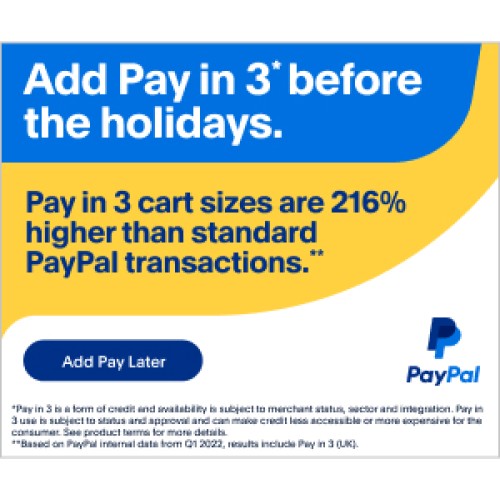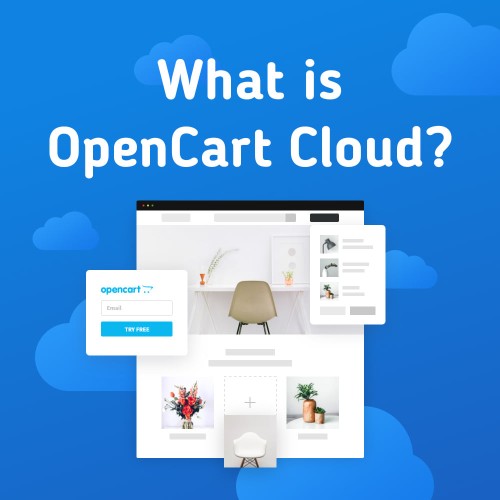As an ecommerce business owner, your job doesn't end after a customer makes a purchase. Now, your task turns from sales and marketing to guaranteeing the order reaches your customer.
This process is known as ecommerce fulfillment, essential to running a successful online store. The best ecommerce platforms (we're looking at you, Amazon) have perfected efficient fulfillment operations.
However, doing so isn't a walk in the park. Ecommerce fulfillment requires careful planning, third-party logistics, and talented employees to do the job consistently. If you're new to running an online store, you'll likely have a lot of questions to ask about ecommerce fulfillment.
Don't worry. In this guide, we'll explain everything you need to know about ecommerce fulfillment and how to get started.
Let's dive in.
What is Ecommerce Fulfillment?
Ecommerce fulfillment is a comprehensive supply chain process that entails getting a product to a customer. Here are the steps of ecommerce fulfillment:
Receiving and storing inventory
Processing orders and picking items
Packing orders with product
Shipping boxes to the target destination
There are three main fulfillment strategies:
Merchant fulfillment
Dropshipping
Third-party fulfillment
Let's take a closer look at each strategy in more detail.
Merchant fulfillment
Often called self-fulfillment, merchant fulfillment occurs when the retailer or online store manages the entire order fulfillment process in-house.
This strategy typically requires the business to handle every aspect of the fulfillment process — from storing inventory, packing orders, and shipping products to the end customer.
Advantages:
Direct Control: Businesses have complete control over their inventory and can ensure that products are handled and shipped as per their standards.
Cost-efficiency: For small businesses that have a manageable order volume, this method can be cost-effective as they avoid third-party fees.
Customization: Retailers can offer personalized packaging, handwritten notes, or promotional inserts, enhancing the customer experience.
Drawbacks:
Scalability issues: As the business grows, it may outgrow its storage capacity or find it challenging to handle large order volumes.
Resource-intensive: Requires hiring staff, managing warehousing space, and handling returns, which can be time-consuming and expensive.
Dropshipping
Dropshipping is a retail fulfillment strategy where an online store doesn't house (or touch) the products it sells to its customers.
Instead, when an ecommerce store sells a product using the dropshipping model, it purchases the item from a third party and has it shipped directly to the customer. As a result, the merchant never sees or handles the product.
Advantages:
Low startup cost: Businesses don't need to invest in inventory upfront, making it a low-risk model.
Wide product selection: Retailers can offer a broad range of products without extensive inventory.
Flexibility: No need for warehousing space or managing physical inventory.
Drawbacks:
Lower profit margins: Typically, the margins in dropshipping are slimmer because third-party providers take a cut.
Less control: The business has less control over shipping, handling, and product quality since it's outsourced.
Inventory challenges: Relying on third-party stock levels can lead to backorder issues.
Third-party fulfillment
Third-party fulfillment providers, often known as 3PLs, are companies that offer outsourced logistics and fulfillment services.
They handle storage, packing, and shipping for online retailers, allowing businesses to focus on other aspects like marketing and product development.
Advantages:
Scalability: 3PLs can handle large order volumes, making it easier for businesses to scale.
Cost-effective: By leveraging the infrastructure and resources of a 3PL, businesses can save on warehousing and staffing costs.
Expertise: Many 3PLs offer value-added services like kitting, custom packaging, and return management.
Drawbacks:
Less direct control: Businesses might have less control over the exact handling of their products.
Fees: Using a 3PL introduces another cost layer. While it might be cost-effective, it's essential to understand all associated fees.
Integration issues: There might be challenges in integrating the 3PL system with the merchant's ecommerce platform.
Why is Ecommerce Fulfillment Important?
Ecommerce fulfillment concerns are the often overlooked aspect of running an online store.
Many online stores spend thousands of dollars on marketing, website development, logistics, and product development. However, one of the most important aspects of running an ecommerce store is delivering goods to the consumer.
If you want to grow your online store, surpass your competitors, and increase total revenue, you must create an air-tight ecommerce fulfillment strategy. Without a working fulfillment process, your online store can fall victim to international shipping delays, logistical errors, and more.
All of these can hamper customer satisfaction and increase customer churn. Generally speaking, if you don't get a hold of your ecommerce fulfillment strategy, it'll cause massive problems in the long run.
For example, let's say that you're selling hair care products on Etsy and Amazon. You've recently increased your online retailer business ad spend (driving more orders), and it's getting difficult to ship the increased volume of products by yourself.
However, instead of investing in an inventory management service, you turn to a few family members to help. What happens when your family must return to work or can't provide enough help to cover the new order volume?
This could cause further delays and shipping errors that can result in unhappy customers. To avoid an uptick in issuing refunds, mastering the fulfillment process is paramount.
Benefits of Efficient Ecommerce Fulfillment
There are two major benefits of ecommerce fulfillment. The first benefit is improved business revenue. When people place orders online, they expect convenience.
In fact, millennials prioritize convenience in all their consumer interactions. For example, millions of shoppers head to Amazon for one main reason. They love Amazon's deep inventory and know they can get any product they want quickly.
Amazon shoppers often get their favorite products with custom packaging and same-day shipping.
Screenshot by Brandon Lee
Additionally, ecommerce fulfillment improves customer satisfaction. When you improve your customers' shopping experience, they'll return and make more purchases.
The most successful online stores build brand loyalty by refining their ecommerce fulfillment processes.
Common Myths About Ecommerce Fulfillment
Before we cover the ins and outs of ecommerce fulfillment, let's first bust a few myths that could impact your decision.
Myth: I Need a Fulfillment Center Close to My Home
Having a fulfillment center close to your home isn't necessary. Rather, it could hurt your business if you're serving a worldwide audience.
Instead, you should work with fulfillment providers close to your customers. They're the ones who'll receive your products. The closer your fulfillment center is to your customer base, the faster they'll receive your products.
If you don't know where to place your fulfillment center or how to optimize shipping costs, you can rely on data and analysis to guide your decision.
For example, you can use the zip codes from your order history to establish shipping zones. In doing so, you can determine the average cost in transit times to set ideal shipping rates.
Myth: Your Rural Fulfillment Center is the Cheapest Option
Choosing a rural fulfillment center is often the cheapest option on the market. However, you need to look at the whole picture.
You may pay more shipping costs if you place your fulfillment center in the middle of nowhere.
Also, if your customers live in big cities, your products will take longer to reach them. As we mentioned earlier, customers want their products as quickly as possible (especially the younger generations).
Myth: Warehousing and Fulfillment are the Same Thing
Ecommerce fulfillment and warehousing aren't the same. Warehousing is just one aspect of the ecommerce fulfillment process. Both are ideal for specific situations.
Investing in a warehouse is necessary if you simply need long-term storage for your business that isn't selling quickly. Distribution center costs are cheaper than a network of fulfillment centers in the long run.
B2B fulfillment charges a separate storage fee for each item you have, which can add up if your products don't have fast shipping times.
On the other hand, fulfillment centers are better for stores that turnover products quickly.
Almost all online stores rely on fulfillment centers for fast-moving products. However, if you have a large inventory of multiple product variations and just need inventory storage, choosing a warehouse is a better option.
Myth: It's Cheaper to Do the Work Yourself
At the beginning of running an online store, you can save money by fulfilling orders yourself. However, once your store grows and takes on more orders, you'll need to at least consider securing a fulfillment center.
Managing a growing online store is a complicated task. Managing product orders can drain away all the resources you need to successfully run your business.
Ecommerce Fulfillment: Best Practices and Strategies
Now that you know the basics of ecommerce fulfillment, let's cover some strategies you can implement to run a more efficient online store.
Develop a Proprietary Fulfillment System
For brands that offer unique items, a one-size-fits-all fulfillment strategy often falls short.
Brands like Hims have understood this early on. They realized that when you're selling distinct products, a bespoke approach to delivery can make all the difference.
Enter the concept of the proprietary fulfillment system — a tailor-made approach, just like the products it delivers.
The goal? Creating an ecosystem where your unique offerings are matched with an equally distinctive fulfillment strategy, ensuring consistency in the brand experience from order to delivery.
Let's look closer at the model Hims uses to ensure timely and accurate product delivery is crucial for a customer base seeking health and wellness solutions.
Through its entire fulfillment process, Hims provides a seamless shopping experience from order placement to product arrival. This includes robust inventory management, streamlined order processing, and reliable shipping and delivery solutions.
Hims' ecommerce fulfillment team diligently manages its inventory, ensuring that products are in stock and readily available.
When customers place orders, the entire fulfillment process efficiently processes them, verifying product availability and calculating accurate shipping costs. The attention to detail helps prevent delays and provides transparency in the purchasing process.
Once an order is confirmed, Hims relies on a network of trusted logistics partners to handle the shipping and delivery.
This network prioritizes speed and reliability, ensuring customers receive their orders promptly and in excellent condition, especially considering that products such as ED meds are delicate and need proper treatment.
Investing in this unique fulfillment approach has turned a small wellness brand into a publicly traded company.
Lock Arms With the Right Shipping Partners
When it comes to offering a seamless ecommerce fulfillment experience, every detail counts.
One critical aspect that can significantly impact your customers' satisfaction is choosing the right suppliers, especially when shipping your products internationally. This choice can make or break your brand's reputation.
Consider StudioSuits, a brand renowned for its exceptional handcrafted men's tuxedo suits and pants. They are an excellent example of a company that understands the importance of reliable and trusted suppliers, particularly with worldwide shipping.
StudioSuits has forged partnerships with some of the most reputable worldwide shipping giants, including UPS, DHL, and FedEx.
This strategic collaboration guarantees the safe and efficient delivery of their exquisite products to customers across the globe and enhances their brand's credibility and customer trust.
Navigating the world of ecommerce fulfillment requires a blend of strategy and efficiency. In short, a major key to ecommerce success is working with reliable couriers who can ensure on-time deliveries and handle products with care.
Embrace Automated Analytics
Recent statistics reveal that businesses embracing automated analytics experience a game-changing 50% reduction in the time it takes to derive actionable insights from their data.
This powerful tool empowers ecommerce entrepreneurs with real-time data analysis, enabling them to uncover critical market trends, optimize marketing strategies, and enhance overall customer experiences revolutionizing the modern enterprise supply chain management with AI.
Picture this: you're tracking user behavior on your ecommerce platform, and within seconds, automated analytics provides you with comprehensive reports that reveal:
What marketing channels are most effective
When your website experiences peak traffic
Which products are trending
Which warehouses should stock which items to ensure minimum cost for final-mile delivery
So now you're not merely taking shots in the dark when stocking inventory — you're making decisions rooted in data-driven certainty.
This newfound agility translates into improved conversion rates, higher revenues, and, most importantly, a competitive edge that propels your ecommerce venture toward unparalleled success.
Create a Transparent Return Policy
We've all been there — that moment of hesitation before clicking the "buy" button, wondering, "What if I need to return this?"
Return policies are the unsung heroes that play a pivotal role in comforting and guiding consumers through our online shopping journeys.
These guidelines provide a clear framework for both buyers and sellers during product returns. Creating an easy-to-understand and transparent return policy is one of the easiest ways to build trust with your customers.
A shining example? VRAI, with its crystal-clear return policy on man-made diamonds, beautifully exemplifies how transparency can be seamlessly woven into the fabric of ecommerce (especially on high-ticket items).
With a dedicated landing page, VRAI's website provides detailed information about its holiday return policy and what products are eligible for returns.
By being upfront about your return procedures, you're telling customers that you value their business and are committed to their satisfaction.
And yes, returns fall into the last stage of the fulfillment process. The process isn't over until you have a satisfied customer.
Final Words
Ecommerce fulfillment is the wheel that moves your ecommerce business forward.
You can develop a great advertising strategy, convince shoppers to buy, and develop a quality product. However, if you can't get the product to a customer within a reasonable time, your efforts will go out the window in a flash.
With that said, it's the responsibility of every online store owner to create an effective ecommerce fulfillment strategy to deliver an amazing customer experience. Here's to your ecommerce success!



Login and write down your comment.
Login my OpenCart Account